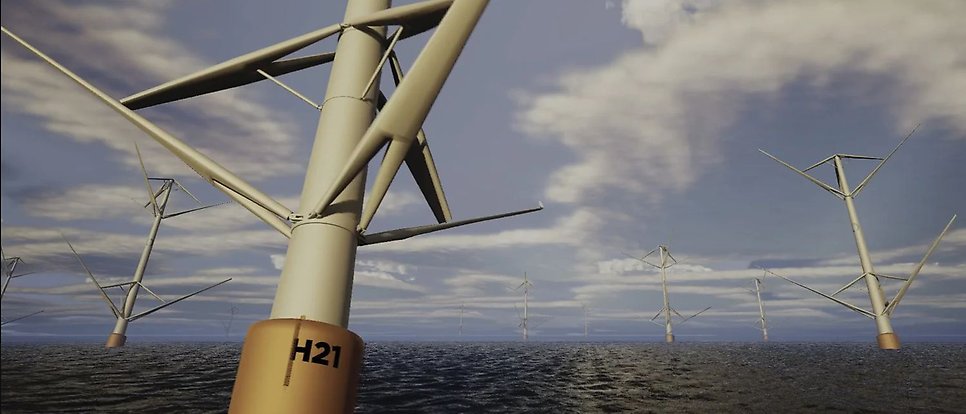Future wind farms could float offshore

The wind turbines will have counter-rotating turbines and should be scalable in order to generate twice as much energy as today's largest wind turbines. Image: World Wide Wind
Offshore wind turbines could meet our entire energy needs. Hans Bernhoff, Professor of Electrical Engineering at Uppsala University, is developing wind turbines that will float out at sea, tilt like a sailboat and can be built much larger than today’s land-based wind turbines.
“80 percent of the world’s wind power resource is located in deep water, and the wind turbines currently operating in the oceans stand on a scaffolding on the bottom. This works at a depth of perhaps 60 metres, and in the future maybe even up to 80–100 metres. But then it stops. At a depth of a few hundred metres, it becomes far, far too expensive,” explains Bernhoff, who has been researching wind power for almost a quarter of a century.
The basic idea behind his wind turbines is that they should have two counter-rotating turbines and be a cross between vertical-axis and traditional horizontal-axis wind turbines. Unlike the latter, which were originally developed to stand on land, these will be much cheaper to set up because they are fully adapted to be placed floating in deep water.
Low centre of gravity
As all the heavy equipment is placed at the bottom, they have a very low centre of gravity from the outset and therefore do not require costly adaptations to be placed on floating foundations.
An important aspect for both him and his partner, the Norwegian company World Wide Wind, has always been for their wind turbines to be competitive and that the new technology should be scalable to produce much more electricity than is possible with today’s wind turbines.
The experience that Bernhoff gained through his hobby as a sailor and designer of trimaran boats was an important source of inspiration when it came to maximising the power output of wind turbines.
“A standard keelboat is designed to tilt. So why not design a turbine that runs best when tilted? A floating turbine has ballast to prevent it from tipping over. If this ballast is allowed to lean 30 degrees, you get much more leverage and much more stability. The third thing I did was to put the generator at the bottom, because if you have a big heavy generator, it helps with stability,” he explains.
Robust structure
The entire structure should be robust and designed to allow the wind to sweep over as much of the wing as possible.
“It’s very good to have a simple and robust turbine because wind power has traditionally become cost-effective by scaling up. And I think exactly the same will happen with floating technology. It will become cost-effective as we scale it up, so we need to scale well beyond today’s largest turbines which are approaching 20 megawatts. We have looked at this design and it is no problem to build double that, i.e. 40 megawatts or more. And that makes it very interesting,” continues Bernhoff.
The idea is to place the turbines in wind farms several miles off the coast, where they are barely visible from land.
“The potential off the coasts of Scandinavia alone is over 1,000 gigawatts of installed power. That’s roughly 40 times the power we have in Sweden during peak moments, so the potential is huge. We could solve Europe’s energy problems in Scandinavia,” says Bernhoff.
Tower made of wood
He believes that these wind turbines can produce electricity as cheaply as onshore wind turbines. The key is to keep manufacturing costs down. One example is that there is very little steel in the structure. The tower itself is made of wood, which has two advantages over using steel: it is cheaper to manufacture and lighter in weight.
“It’s very much about saving materials, saving the environment and saving costs. So that’s what I’ve tried to optimise this whole geometry to do. We have tried to use cheap, environmentally friendly materials that are in abundant supply,” adds Bernhoff.
But how do you service a wind turbine that may be 400 metres high and located far out at sea where the wind is always blowing?
“The solution here is to build them extremely simply and robustly. They basically have two rotating parts. We don't have gearboxes, we don’t have a lot of complicated mechanics. And this makes us believe that we can build them in a way that requires hardly any servicing at all,” replies Bernhoff.
Åsa Malmberg
